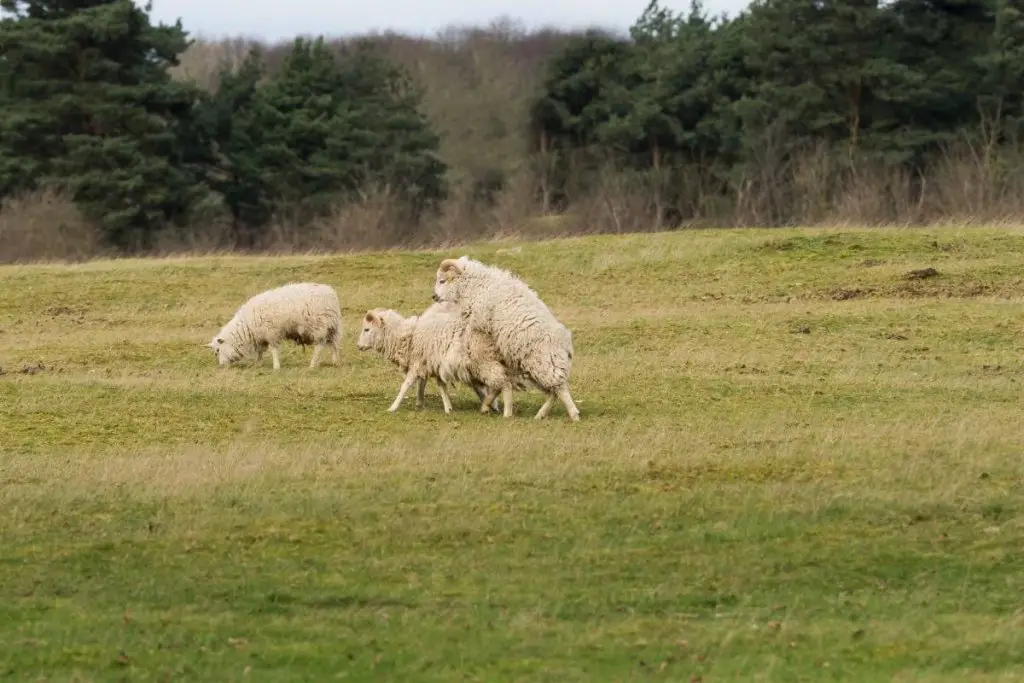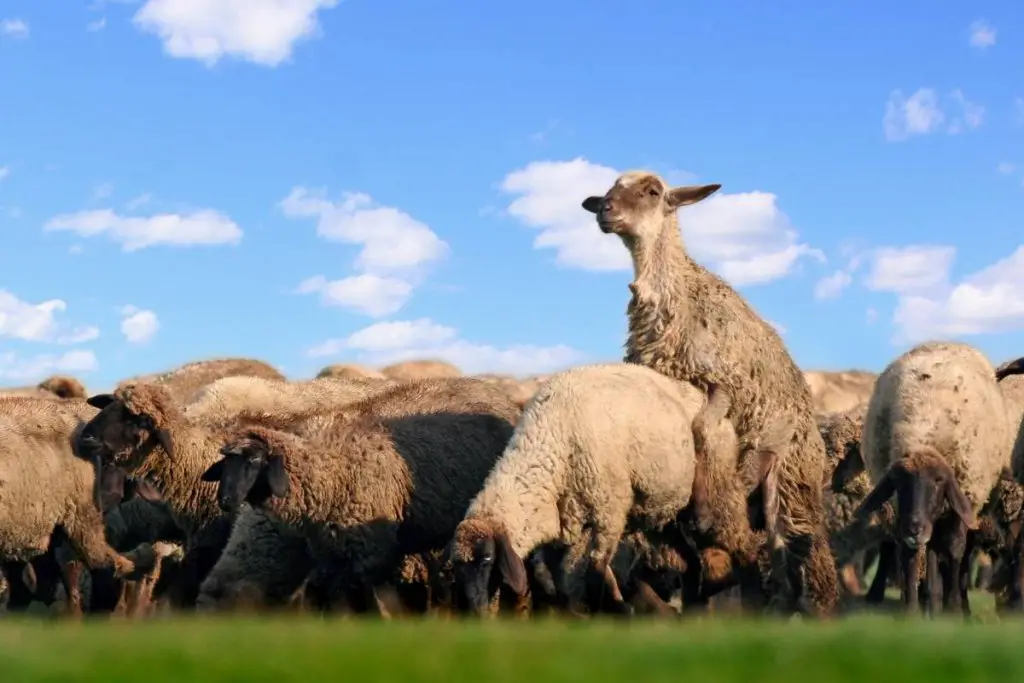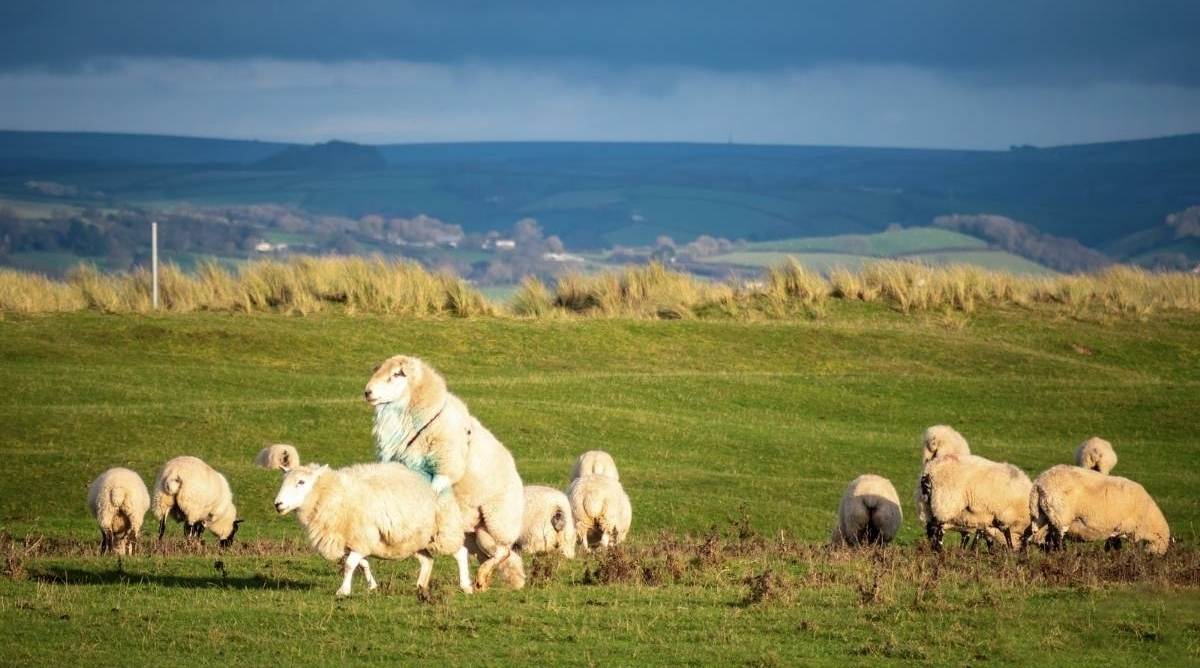When breeding sheep, start by considering your purpose for breeding. Do you want your sheep to have finer wool, or to put on weight faster? From there, you'll want to consider the breeds of sheep you're crossbreeding, the best season for breeding, the gestation period of the ewes, and the ratio of rams to ewes in each pen.
Table of Contents
What’s your goal in breeding sheep?
When breeding sheep, start with the end in mind. What’s your goal?
If you’re raising wool sheep, are hoping to breed sheep with finer, more profitable wool? If you’re raising meat sheep, are you hoping to breed sheep that put on weight faster?
Based on your goal, your next task is to pick which breeds to mate.
Picking the breed
To continue the wool versus meat example:
- Wool sheep: Merino sheep offer an excellent option for crossbreeding in order to improve the fineness of the wool.
- Meat sheep: Suffolk rams are highly popular for crossbreeding. Their offspring tend to put on weight quickly. You may also consider breeding with a hairless breed, like the St Croix, in order to create a lower-maintenance meat breed.
Finding a Suitable Ram to Mate

Taking note of a ram’s data from birth to the present is important. Your goal is to ensure that you can choose the ram with the best physical characteristics.
Some traits to look out for include:
- Birth weight
- Weaning weight
- Post-weaning weights
- Wool trait
- Progeny records
Crossbreeding vs. Breeding Within the Same Breed
Crossbreeding is the right choice if you want to improve the traits of your sheep (like finer wool, for example). The downside with this method is you have a chance of failing to get the improvements you’re looking for. You may have to go through the process multiple times.
Breeding within the same breed is for you if you’re already satisfied with the traits of your sheep. Unlike crossbreeding, this is more predictable. You’re not trying to replicate traits that are not dominant.
How to Get Sheep to Mate
You can get the sheep to mate by placing a ram in a pen with all the ewes suitable for breeding.
Do not place two rams in one pen. This may cause fights, stress for the animals, and unwanted injuries.
The fastest way to mate a ewe and a ram is through hand mating.
This means the breeders handpick both the ram and the ewe and encourage them to mate through isolation in one pen. In some instances, breeders may further encourage mating by positioning the testicles and vulva for coitus.
How many rams do you need to mate with a flock of ewes?

A single ram can mate with three or four ewes in a day.
On average, the ratio of rams to breeding ewes is 1:50. If you can set up your flock to make it 1:35, that should help increase conception rates.
When to Mate Sheep
Pay attention to signs of ewes being in heat, including:
- Eating less
- Drinking more water
- Seeking shade more often
- Faster breathing
- Staggering
You may also want to keep a calendar to follow along and predict when their heat cycle will be. Keep rams and ewes separated until you see that your ewes are in heat. This is to ensure that the rams don’t accidentally injure the ewes.
Once you establish that the ewes are in heat, put the rams and ewes together for a short period.
General tips include:
- Exclude ewes with health problems and other related medical histories.
- Groom the hindquarters of the ewes for easier mating.
- Pick the right season for mating based on when you want your lambing season to be. Typical lambing seasons are either in the winter or spring. Plan your mating seasons accordingly.
- Segregate the ewes in heat from the ones that aren’t.
- Use a marking harness on your ram to see which rams have bred with which ewes.
- Wait for at least three months after birth before allowing a ewe to mate again. This is adequate time to help them recover from birth-related injury.
When is breeding season?
A good rule of thumb is that the months of summer or fall are good breeding seasons. Some breeds of sheep may have a different breeding season.
Some sheep can breed “out-of-season,” which means they can breed at any time of the year.
Here are some examples of sheep that breed only at certain times of the year:
- Tunis
- Texel
- Suffolk
- Southdown
- Shropshire
- Montadale
- Hampshire
- Corriedale
- Columbia
On the other hand, these sheep can breed out of season:
- Polypay
- Barbados Blackbelly
- White Dorper/Dorper
- Dorset
- Finnsheep
- Merino
- Rambouillet
- Romanov
- St. Croix
- Navajo-Churro
- Targhee
- Katahdin
Ideally, you should breed sheep once a year. However, if your sheep breed out-of-season, you can breed once every eight months in order to give the ewes a chance to recuperate from birth.

